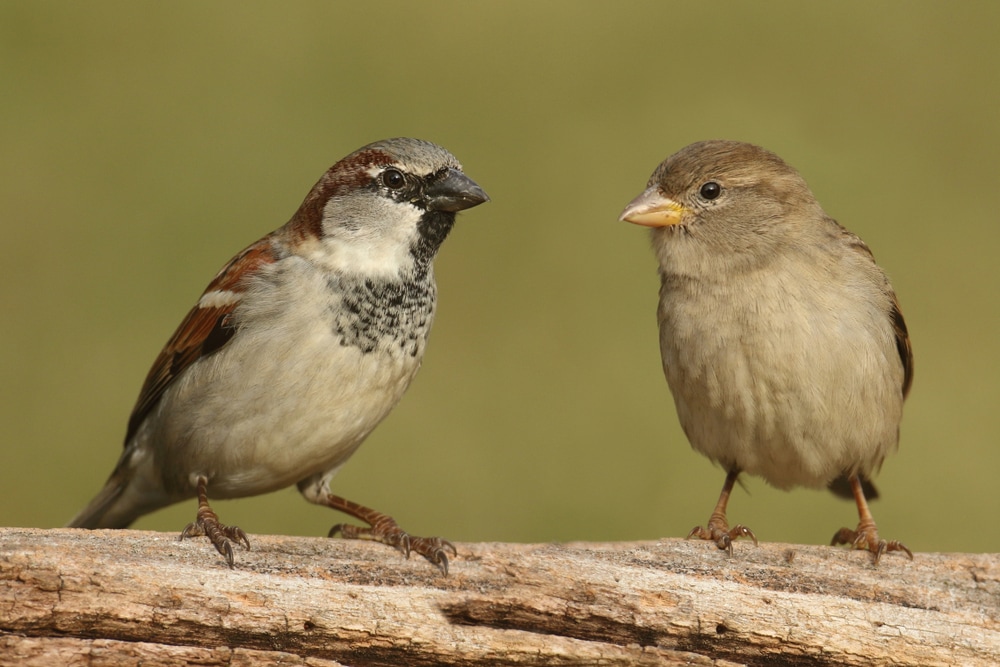
Sparrows are one of the most common bird species around the world. In fact, billions of these small, plump birds exist today! With those numbers, it’s no wonder we see them on a daily basis.
But have you ever wondered what types of sparrows might be in your backyard? This sparrow guide can help! Read on to learn more about these precious birds and the likelihood of seeing one in your yard.
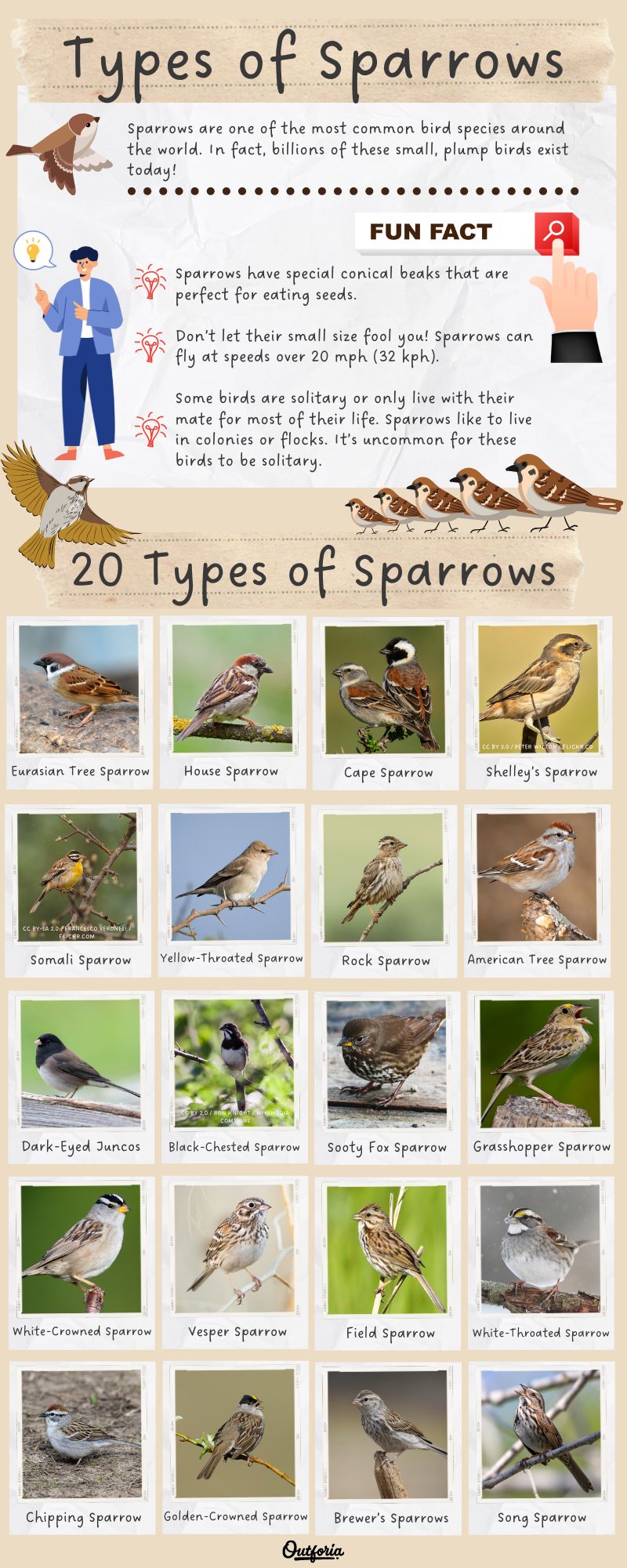
Share This Image On Your Site
You May Also Like: 10 Fascinating Desert Birds And Their Unique Adaptations
What Are the Different Types of Sparrows?
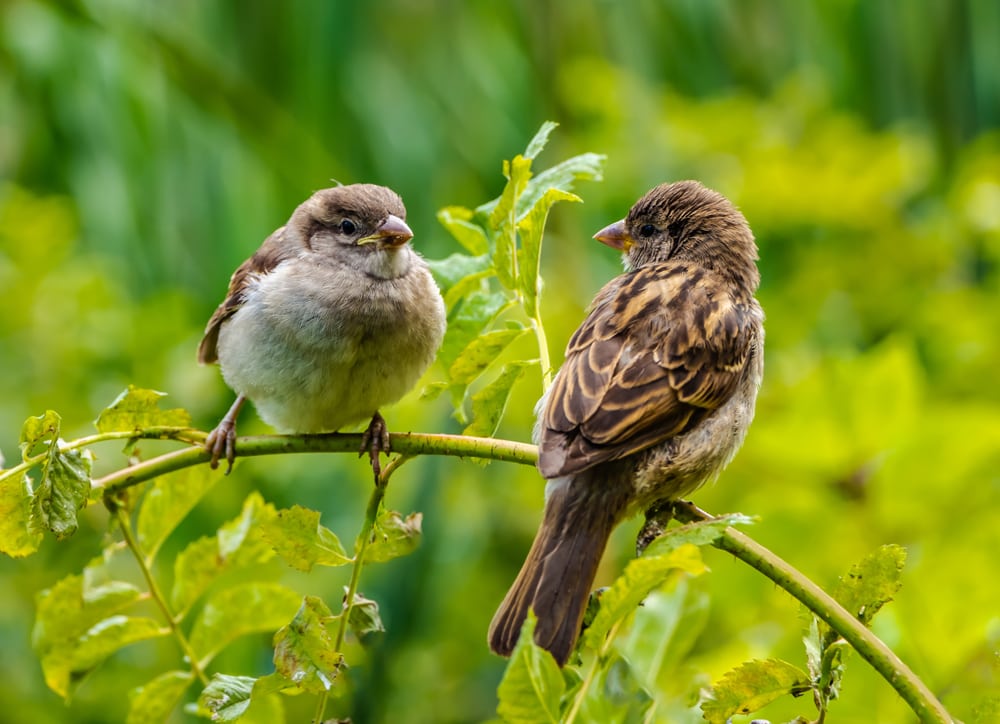
Old World sparrows and New World sparrows are the two main sparrow species groups. Sparrows belonging to the Old World category fall under the family Passeridae. New World sparrows belong to the family Passerellidae.
Old World sparrows are generally referred to as “true sparrows.” This is because New World sparrows aren’t closely related to the species of the Old World. In truth, New World sparrows are more related to bunting birds.
Still, New and Old World sparrows look very similar. Most sparrows are small to medium-sized birds with gray or brown feathers.
You May Also Like: 14 Amazing Birds Of Pennsylvania: Pictures And ID Guide With Facts
Old World Sparrows
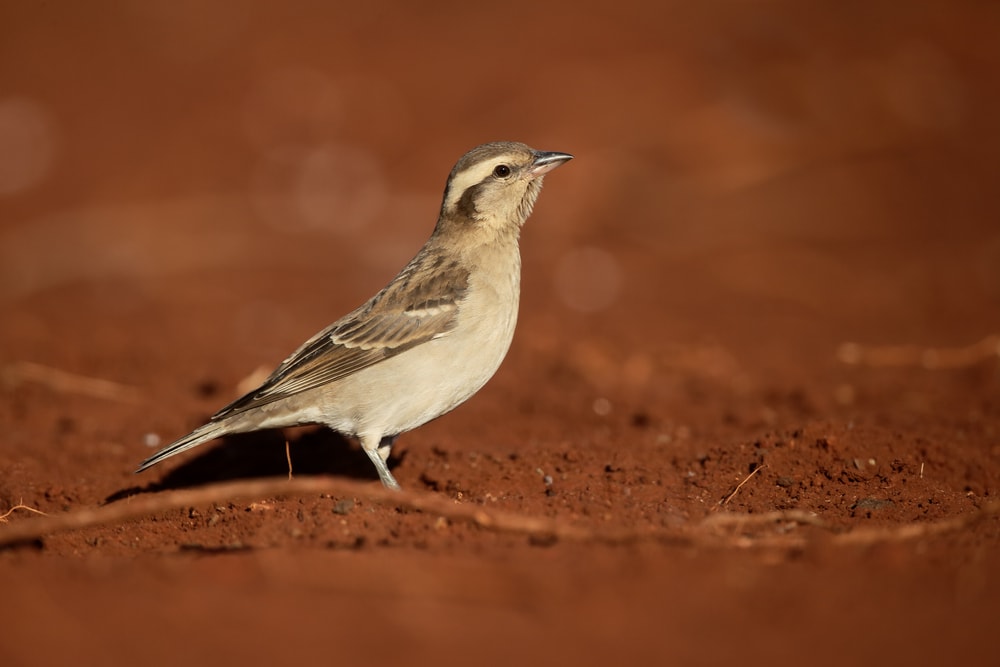
The Old World refers to Europe, Asia, and Africa. This is also known as the Eastern Hemisphere. A large group of sparrow species in the genus Passer belong to the Old World group.
Some Old World species live on every continent due to human introduction. The only continent these birds aren’t found on is Antarctica.
1. Eurasian Tree Sparrow – Passer montanus
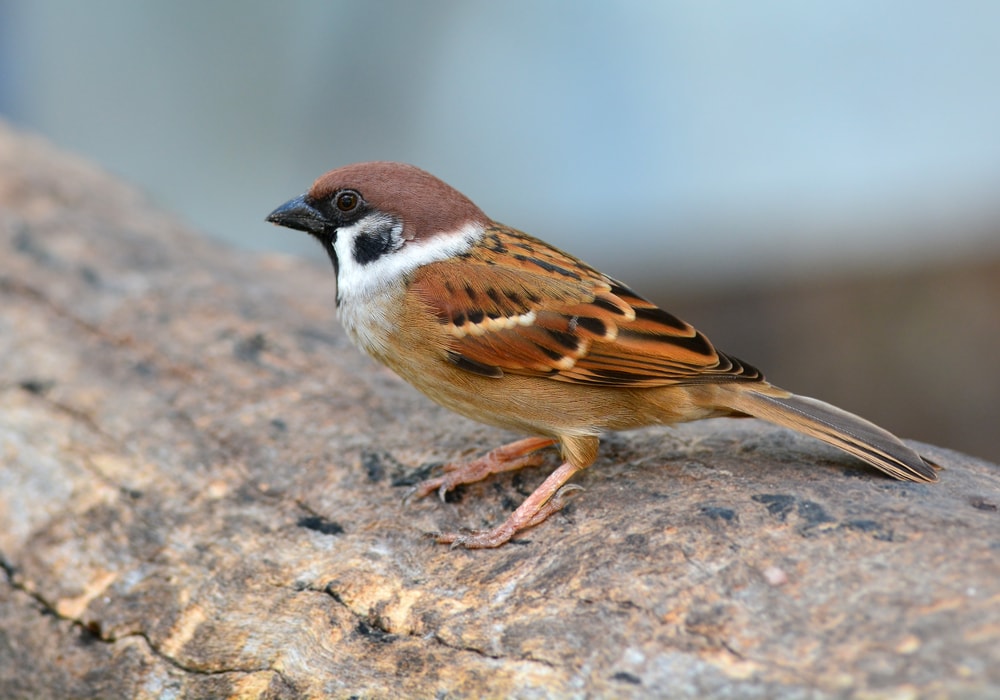
Eurasian tree sparrows are plump little birds with stout beaks. They were first introduced to the US in 1870. Their population didn’t grow as much as the house sparrow, likely due to outcompeting.
This sparrow is more abundant in its native continents of Europe and Asia. It mainly prefers semi-open habitats. These include farmlands, woodland edges, and towns with trees and bushes.
Eurasian tree sparrows can easily be confused with house sparrows. In North America, it’s more likely to spot a house sparrow than a Eurasian tree sparrow.
These birds are year-round residents in Missouri, Illinois, and Iowa.
2. House Sparrow – Passer domesticus
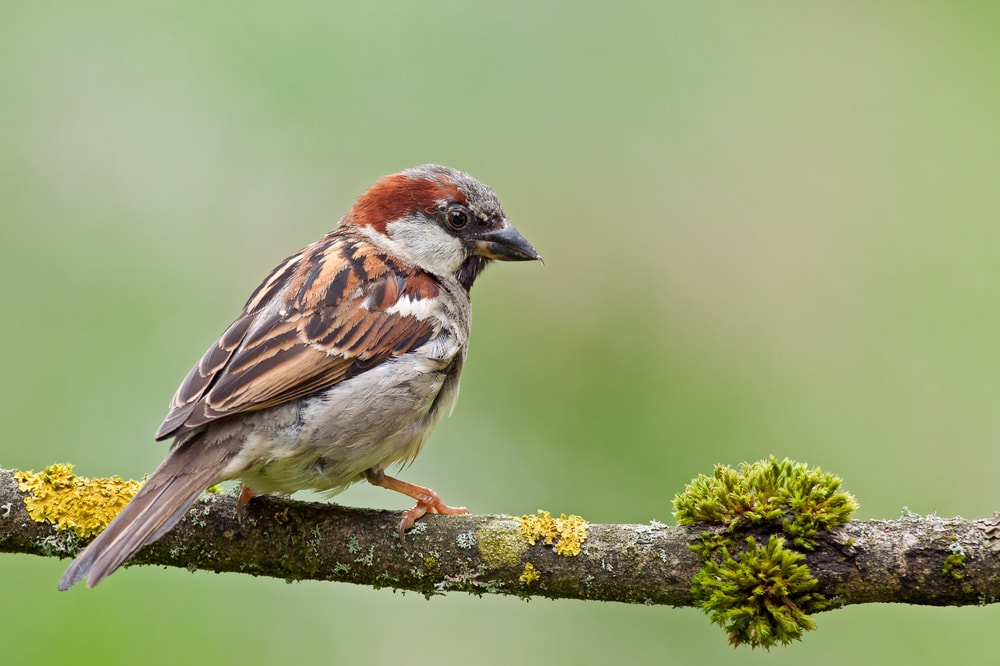
The house sparrow is one of North America’s most widely distributed sparrow species. They’re also called common sparrows.
These are native birds to most of Europe and parts of Asia and Africa. They first arrived in North America in 1851 and brought to Brooklyn, New York.
Since their introduction to the states, the house sparrow population has grown by a lot. They live in urban areas and farmlands but are unlikely to be found in unaltered habitats.
Male house sparrows have bolder colors than females. Adult males have a gray crown with reddish-brown cheeks and a gray to light brown chest. Females are either light brown or tan.
You may see some birds taking a bath in small puddles, but house sparrows like to take baths in dirt. They throw loose dirt and soil onto their feathers to clean themselves. This process creates little depressions in the ground.
House sparrows often make short, chirpy notes. Males try to attract females in courtship using these chirping calls.
3. Cape Sparrow – Passer melanurus
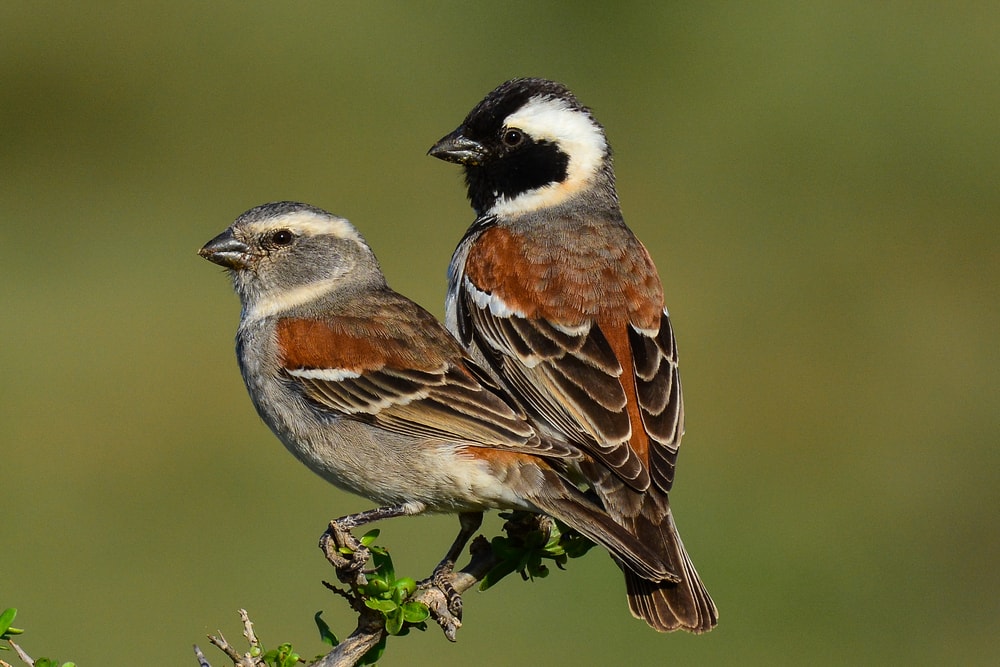
Cape sparrows are social birds found in most of southern Africa below Angola. They live in semi-arid savanna areas and make homes from bushes and trees.
Black markings on the chest, face, and crown are features exclusive to males. Females don’t have any black markings. They’re mostly gray with a whitish-tan streak on the side of the head and rust-colored upper wings.
Outside of breeding season, cape sparrows are very nomadic. They travel in flocks in search of food.
As of today, cape sparrow populations are stable and of least concern.
4. Shelley’s Sparrow – Passer shelleyi
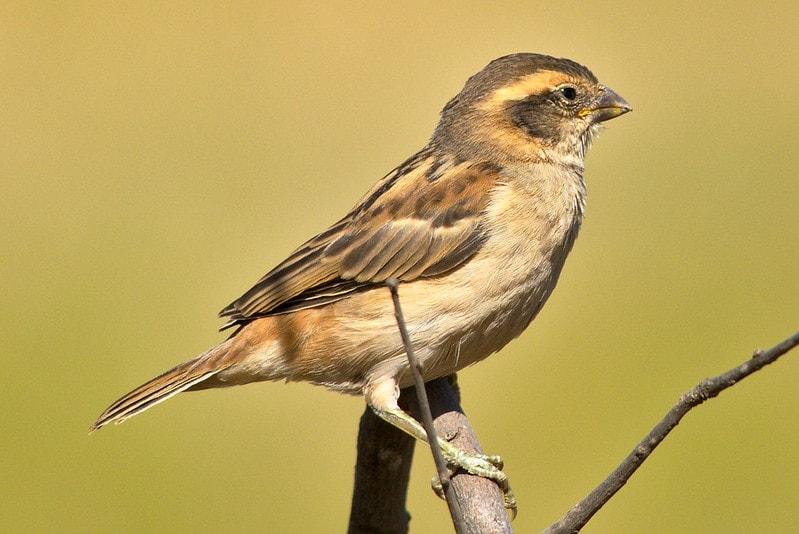
Also named the white Nile sparrow, the Shelley’s sparrow lives in the eastern part of Africa. They live in savannas, grasslands, and shrublands in South Sudan, Ethiopia, and Uganda.
Unlike many other sparrows, these birds don’t like living near urbanized areas. They’re also less social and live in smaller colonies.
Males and females both take part in building a nesting site. You can spot them mating in the fall from September to November.
5. Somali Sparrow – Passer castanopterus
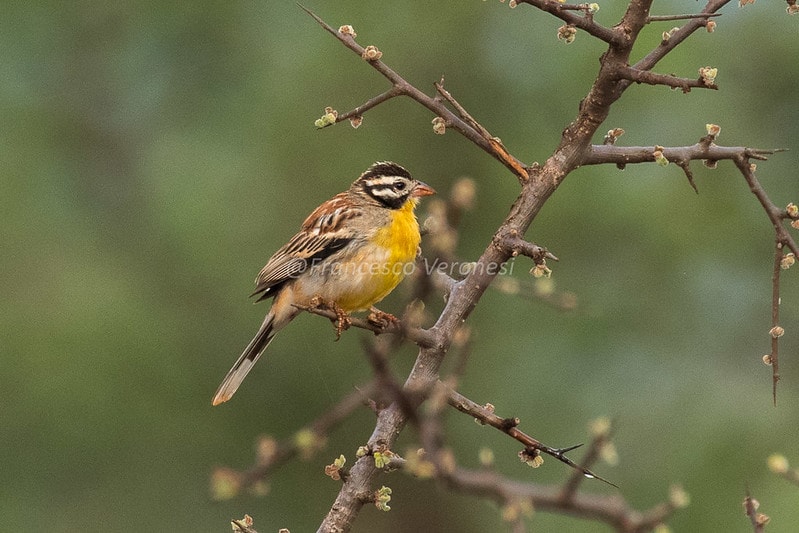
Somali sparrows are a non-migrant species native to Africa. They’re residents in Somalia, Ethiopia, and Djibouti. Their preferred habitat is shrublands and grasslands.
The Somali sparrow looks a lot like a house sparrow. One key difference is a male house sparrow has a gray crown, while a male Somali has a reddish-brown crown.
The lifespan of a Somali sparrow is around six years. The population is of least concern and stable.
6. Yellow-Throated Sparrow – Gymnoris xanthocollis
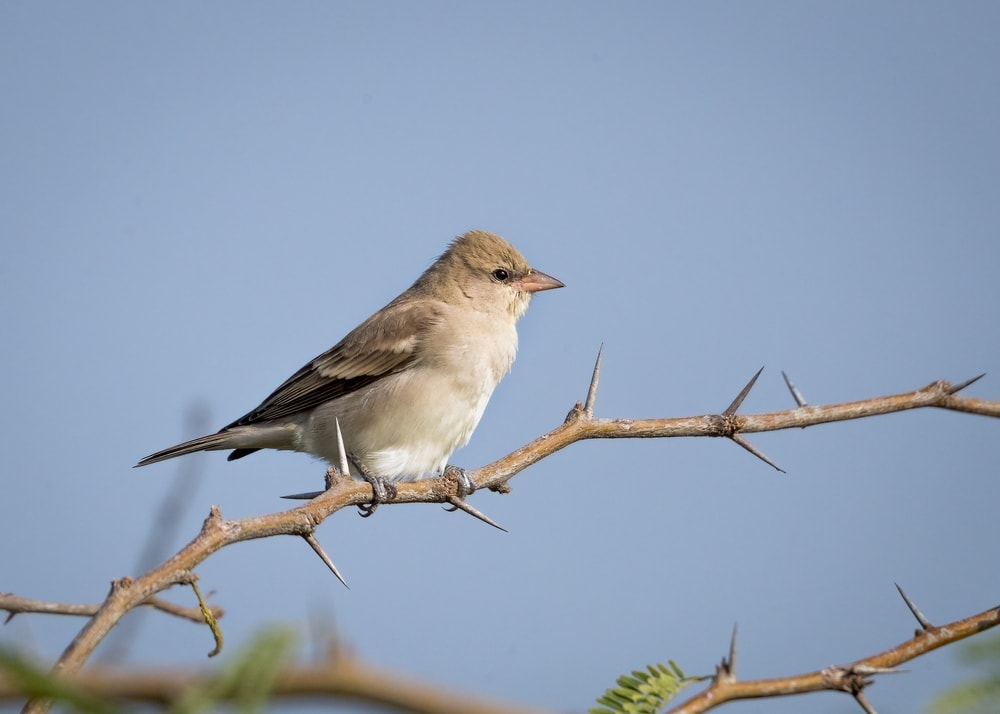
The yellow-throated sparrow is slightly different from other Old World species. It belongs to the genus Gymnoris. This genus was first introduced in the mid-19th century by zoologist Edward Blyth.
This bird is also called the chestnut-shouldered bush sparrow. It’s named for the reddish-brown markings on its upper wings.
Males and females look pretty similar, but males have a yellow patch on their throats. Females are gray with light and dark brown wings.
Yellow-throated sparrows are commonly found in South Asia’s forests and cultivated lands.
7. Rock Sparrow – Petronia petronia
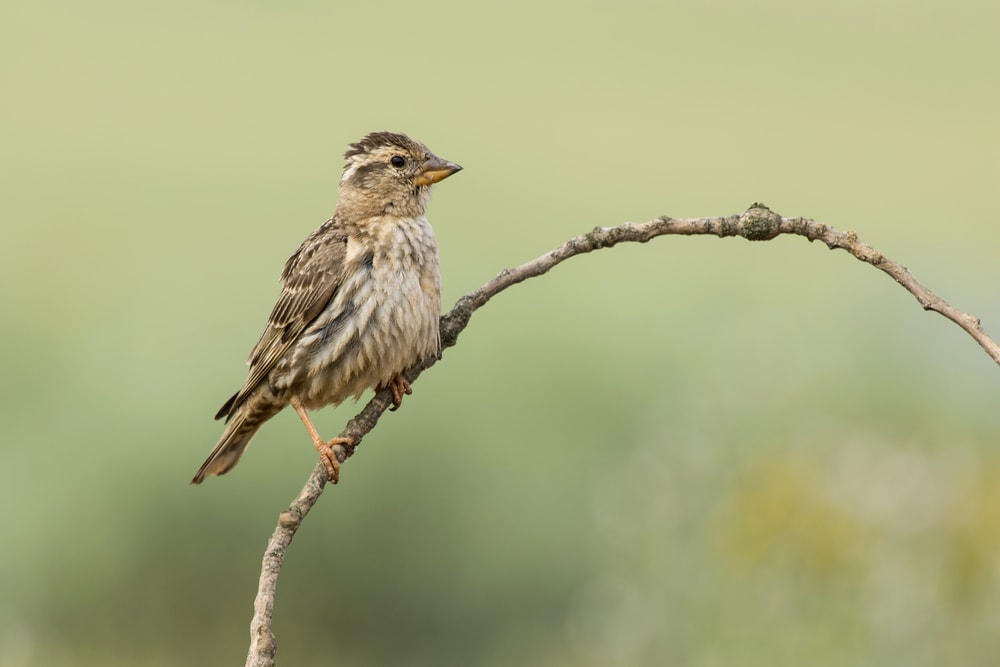
Rock sparrows are abundant in many parts of the Eastern Hemisphere.
Populations are scattered along the northern coast of Africa. They live in places like Morocco and Tunisia. Just north of there, they’re found in parts of Spain, France, and Italy. They’re also found in the Middle East and East Asia.
It’s estimated that there are between 20 to 50 million rock sparrows, and this number is rising.
Although they’re abundant, they have a pretty short lifespan. A rock sparrow’s average lifespan is approximately three years.
Rock sparrows live in subtropical and tropical dry grasslands and rocky areas. Their dusty, light and dark brown fur helps them blend in with their habitat.
New World Sparrows
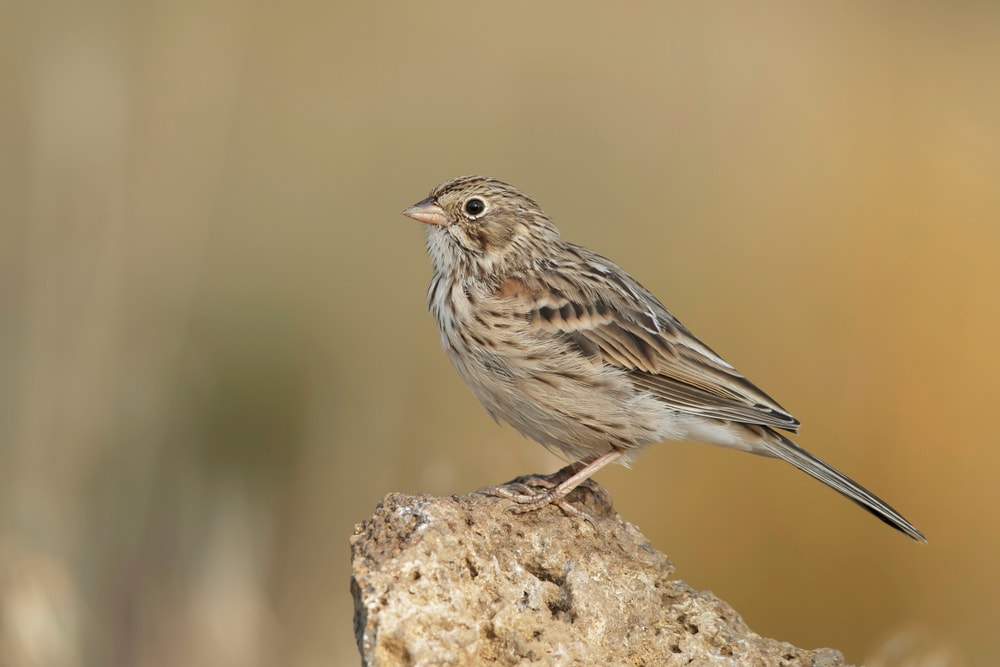
New World sparrows are found in the Western Hemisphere. These birds aren’t true sparrows. Some New World sparrows native to the Old World look different than their ancestors. However, they still share common features.
New World sparrows are typically small to medium-sized and plump. Most of these birds don’t have bright-colored feathers. Common colors are brown, gray, and white.
1. American Tree Sparrow – Spizelloides arborea
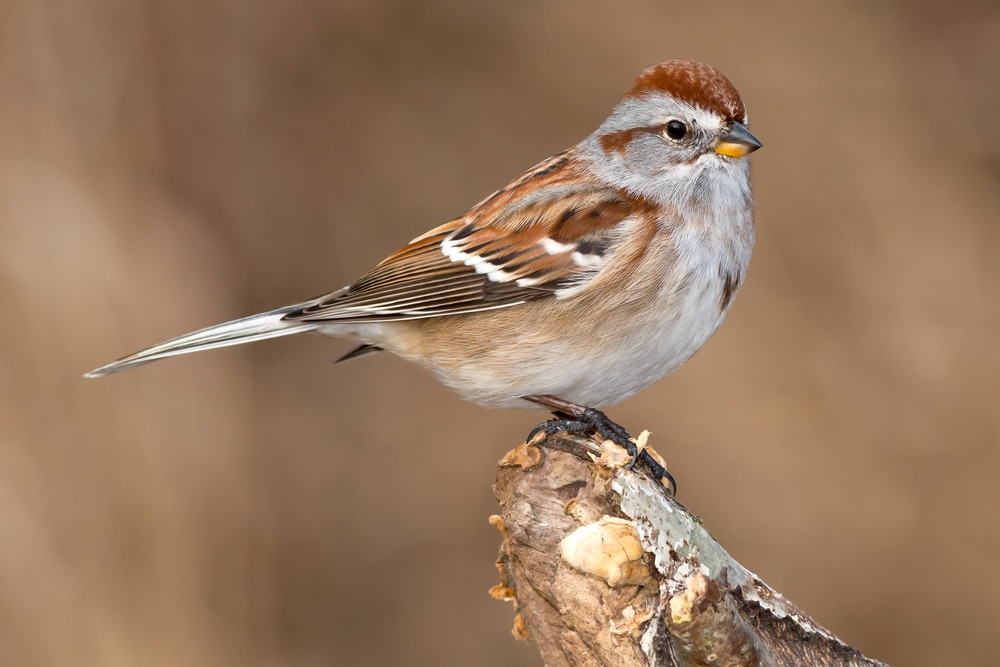
American tree sparrows are small, plump birds. They have rusty-colored caps and markings by the eye and upper wing.
These birds flutter between shrubs and thick brush during winter. They’re fond of the cold and aren’t found in the southern US.
They migrate to the tundra of northern Canada and Alaska for breeding during the summer. In the same season, they prefer feeding on insects. In winter, they mostly feed on grass seeds. You may spot one in your backyard hopping along the snowy ground in search of fallen seeds.
2. Dark-Eyed Juncos – Junco hyemalis
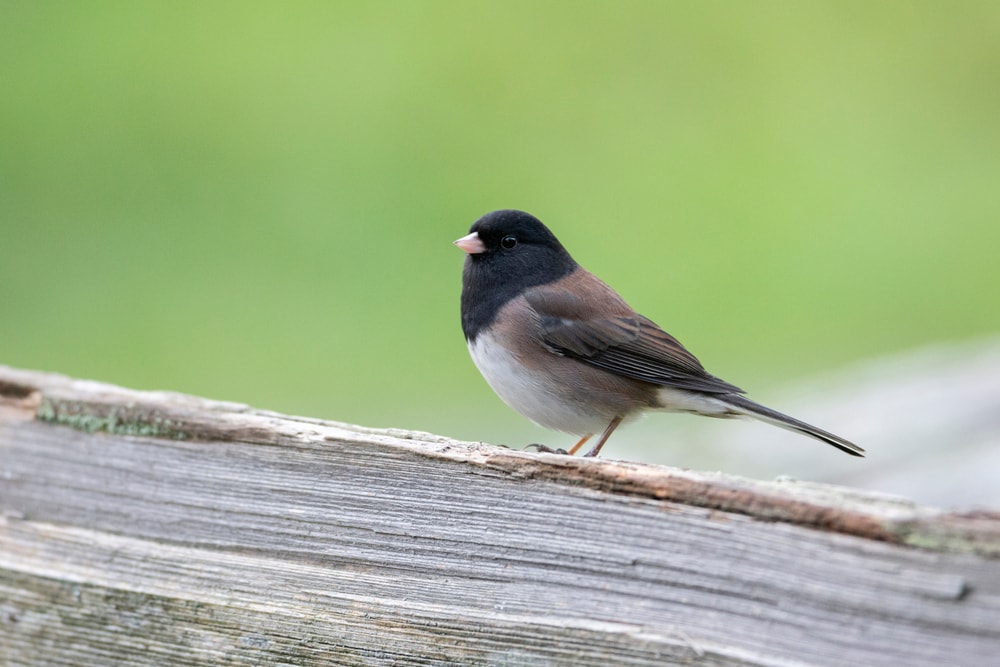
Dark-eyed juncos are one of the most widespread sparrows in North America.
Most populations travel to parts of northern Canada and Alaska to breed. Populations living in western and northeastern states are year-round residents.
Dark-eyed juncos are more often seen during the winter in central and southern states. They mainly live in mixed and coniferous forests. But they’re also seen in open woodlands and backyards during winter.
Their colors vary depending on their range. Some may be gray with white underbellies. Others might have black or gray heads with rusty, gray, and white feathers on the rest of the body.
On the ground, males sing using soft, sweet notes to attract females. When male dark-eyed juncos sing from a high perch, they’re defending their nesting site.
3. Black-Chested Sparrow – Peucaea humeralis
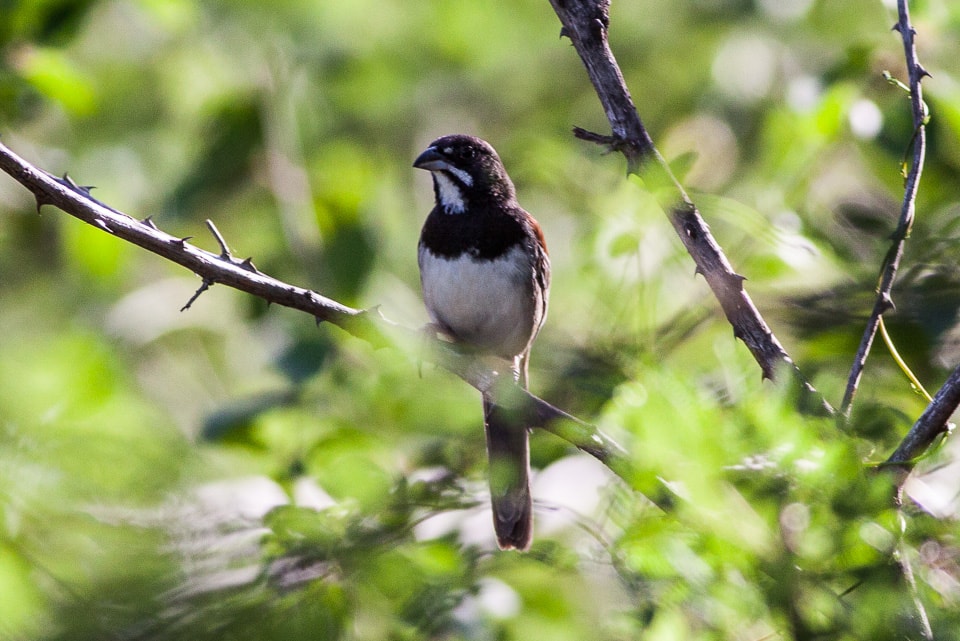
Named for its black chest and throat, this sparrow also has a gray body with a dark gray head. It has two distinct white stripes on the side of its head that sit above and below the eyes.
During breeding season, this bird only stays in some western and southwestern states. It’s found year-round in most parts of northern Mexico.
The black-chested sparrow inhabits dry areas, including desert scrub and canyons. They might wander into a backyard to find food. One of their favorite snacks is black oil sunflower seeds.
Males are very defensive during nest construction. But during incubation, they become less defensive.
4. Sooty Fox Sparrow – Passerella unalaschcensis
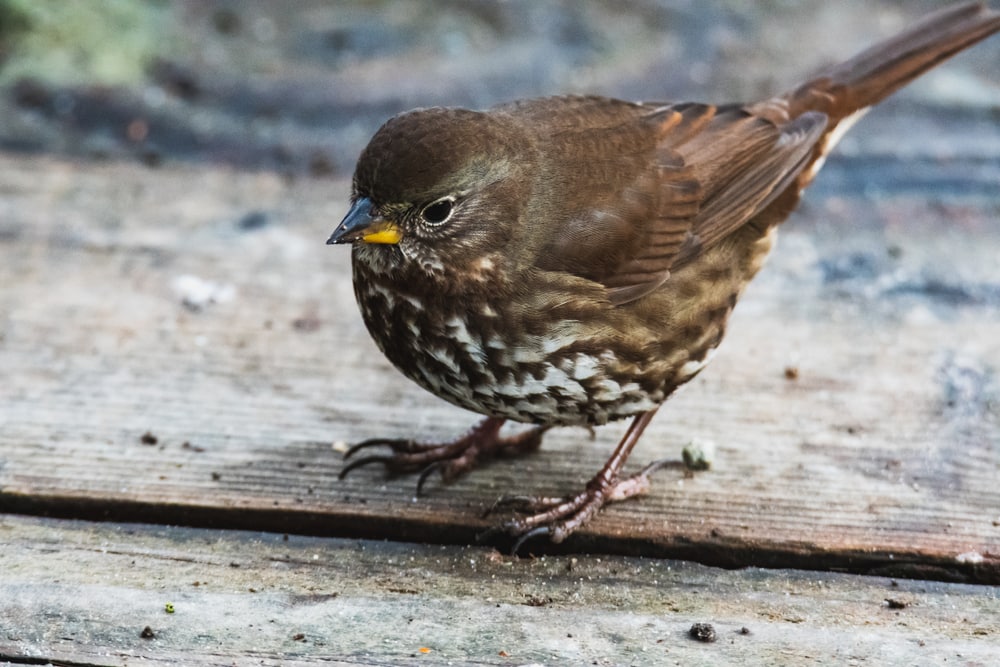
Sooty fox sparrows live on the western coast and southeastern region of the US during winter. It travels to northern Canada and Alaska for breeding. It’s only found year-round on the western coast of British Columbia.
Fox sparrows have different appearances based on where they live. Eastern fox sparrows have more chestnut-colored feathers with a white underbelly. Western fox sparrows have more brown or gray feathers.
If you’re trying to spot a fox sparrow, you can typically find them lower to the ground. They build nests in low-lying shrubbery and forage for food nearby.
5. Grasshopper Sparrow – Ammodramus savannarum
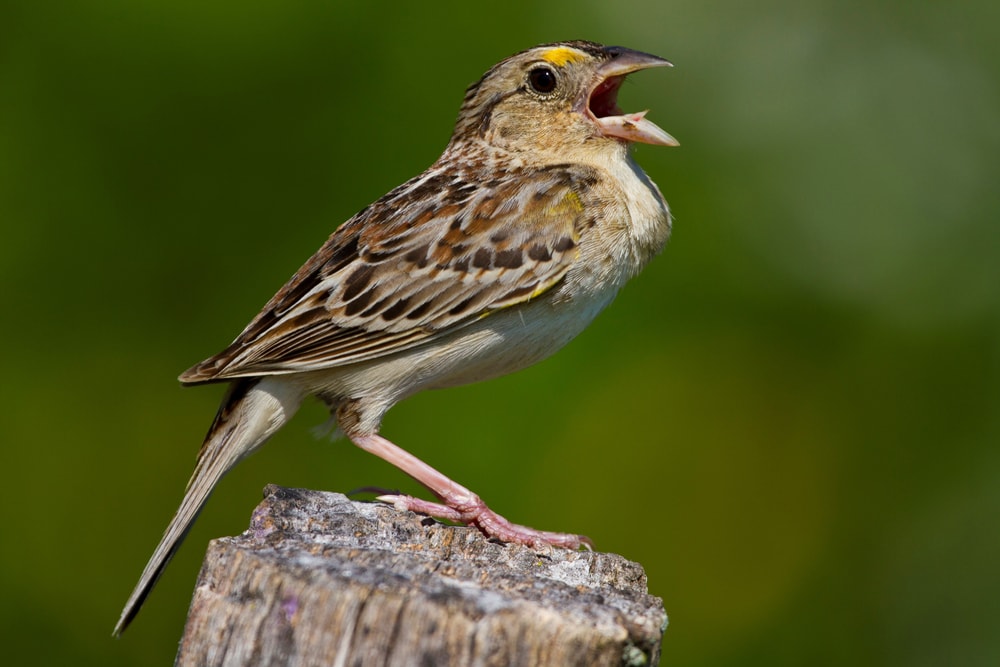
Grasshopper sparrows are named for their preferred diet of grasshoppers. Coincidentally, they also have a call that sounds like a buzzing insect with hoarse notes. Males have a second call that’s more melodic.
A grasshopper sparrow’s range is mainly in Mexico and the southeastern US. During summer, they mate in the Midwest and eastern states.
Baby grasshopper sparrows become fledglings more than a week after hatching. They leave the nest before they’re able to fly well. This might lead someone to think they’re abandoned or injured.
Adults can be found hopping along the ground foraging for food, such as insects and seeds.
6. White-Crowned Sparrow – Zonotrichia leucophrys
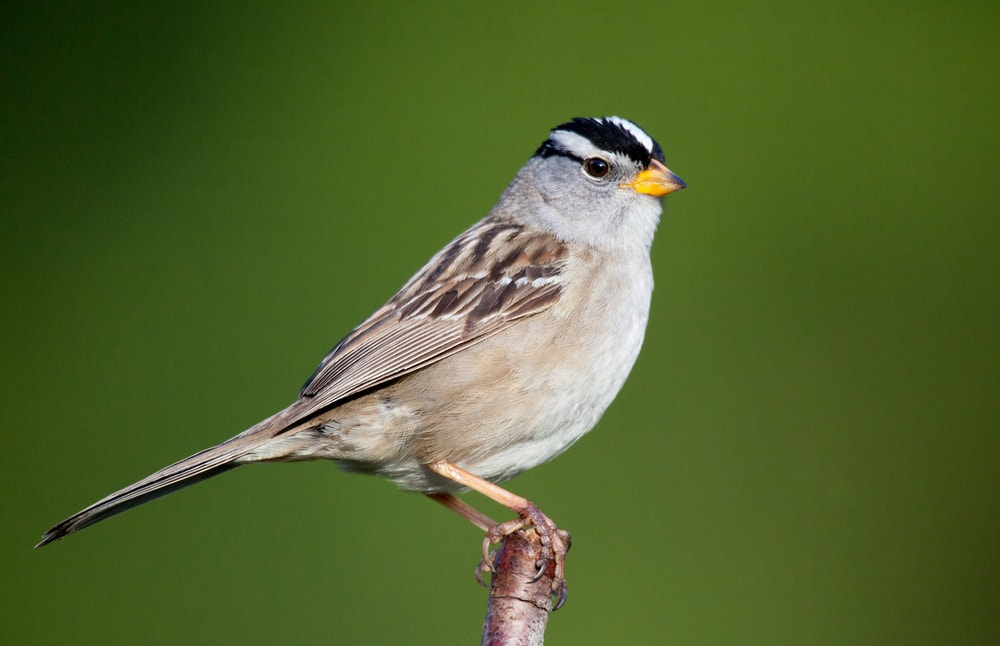
White-crowned sparrows are very common birds throughout most of North America. This sparrow winters in the southern half of the US. In the early summer, they travel to northern Canada and Alaska to breed.
The head of a white-crowned sparrow has white and black stripe markings. They have an orange beak and gray chest. The rest of their body is a typical light and dark brown with some white feathers.
This sparrow may get confused with a white-throated sparrow. One difference is that white-throated sparrows have yellow patches above the eye.
7. Vesper Sparrow – Pooecetes gramineus
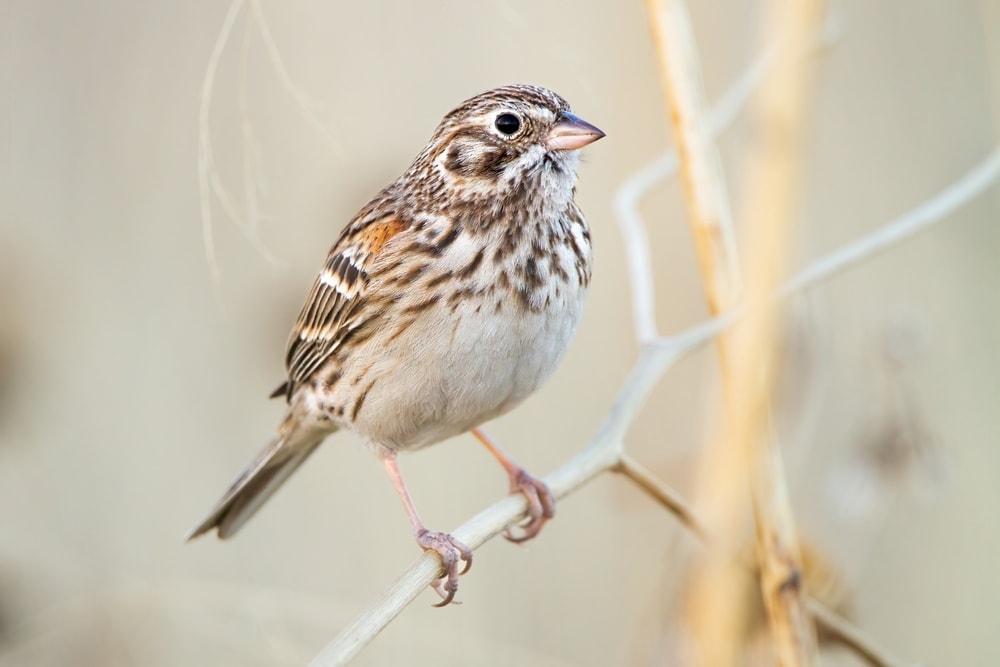
Vesper sparrows are a larger species that can be hard to identify. Its chest is white, and the rest of its body has streaks of light and dark brown.
These sparrows don’t travel as far north as others for breeding season. Most populations migrate with the seasons and aren’t year-round residents.
You might spot a vesper sparrow during winter if you live in the southern US. If you live in the northern or western US, you might see them in the summer.
Males are defensive over their nesting area. If an intruder comes, male vespers will find a perch to let out a singing call.
8. Field Sparrow – Spizella pusilla
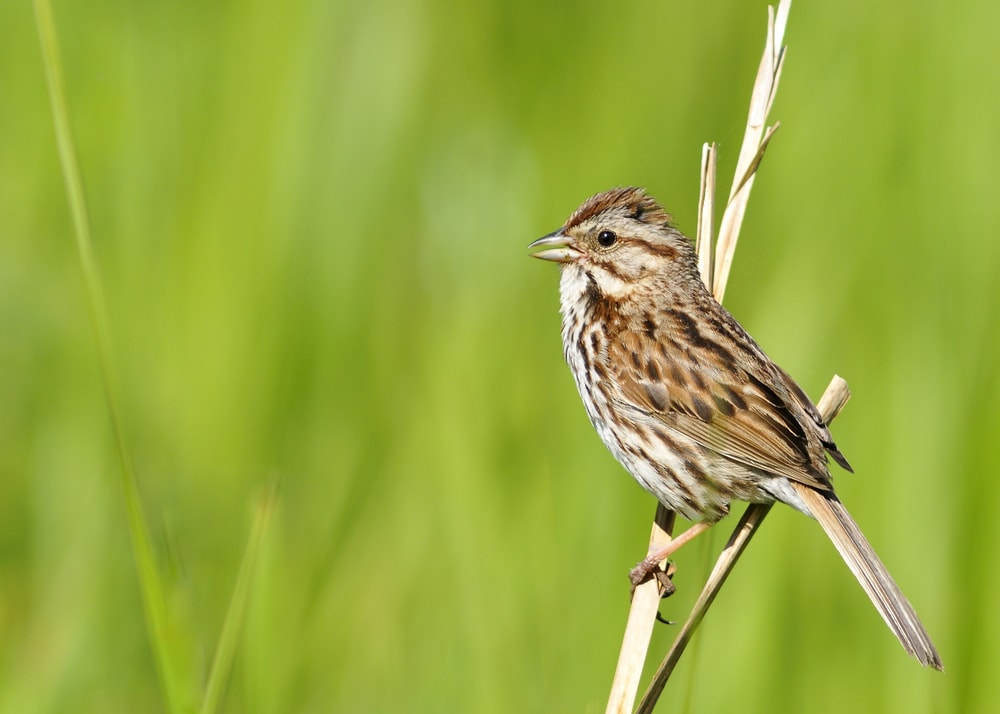
As the name suggests, field sparrows can be found in grassy fields. They also inhabit similar areas with small trees and shrubbery.
They come in light, sandy brown, and gray colors. This coloring allows them to blend in well with golden grass fields and pastures.
Some field sparrows travel to the northeast and midwestern states for breeding. Most are year-round residents of the eastern US. Some populations may migrate south for the winter.
These sparrows have a special defense mechanism. When they feel threatened, some field sparrows may act like their wing is injured.
9. White-Throated Sparrow – Zonotrichia albicollis
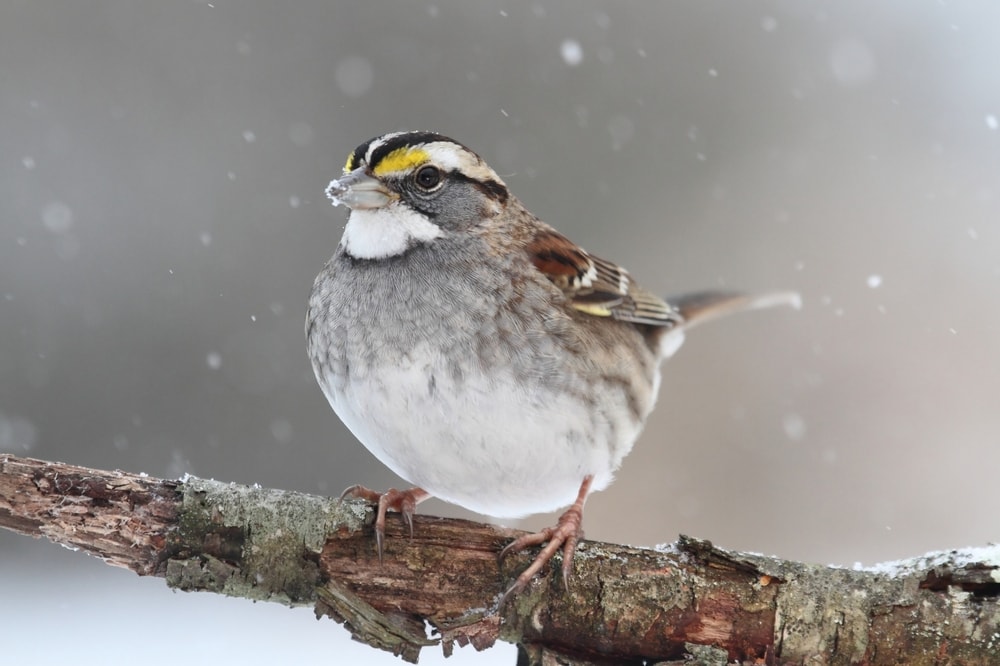
White-throated sparrows have brown wing feathers with black streaks. They have a white throat and underbelly. Their head has a black and white stripe pattern with a yellow patch of feathers near the eyes.
Their year-round range is mainly in northeastern states. Most populations are fully migratory. Many travel to the southeastern region of the US for the winter. Breeding occurs in the eastern and central regions of Canada.
A white-throated sparrow can live in woods, forests, and overgrown fields. They’ll visit your backyard if you offer a bird feeder with seed mixes.
White-throated sparrows sometimes take part in odd breeding behavior. Some individuals mate with dark-eyed juncos, resulting in hybrid offspring.
10. Chipping Sparrow – Spizella passerina
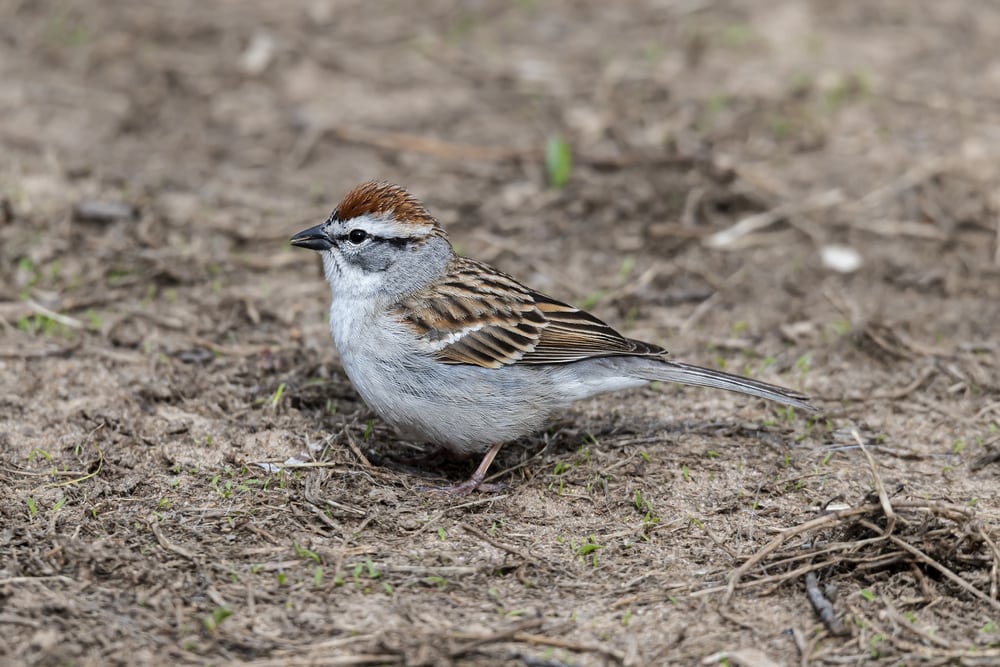
Chipping sparrows used to be common urban birds across the US. That was until the house sparrow took over these areas.
They still inhabit suburbs, city parks, and towns, however. They originally lived in open woods and conifer forests. But due to human activity, these birds had to adapt to other places.
Breeding adult chipping sparrows have a bright rust-colored patch atop the head. They also bear the signature light and dark brown wing feathers like most sparrows. Their chest and underbelly are white. Juveniles and nonbreeding adults are more brown or gray.
The rust-colored cap on this bird may cause it to be confused with an American tree or field sparrow.
Chipping sparrows are widespread birds in North America during breeding season. They’re year-round residents in the southeastern US and part of Mexico. This is also where most populations travel for winter.
11. Golden-Crowned Sparrow – Zonotrichia atricapilla
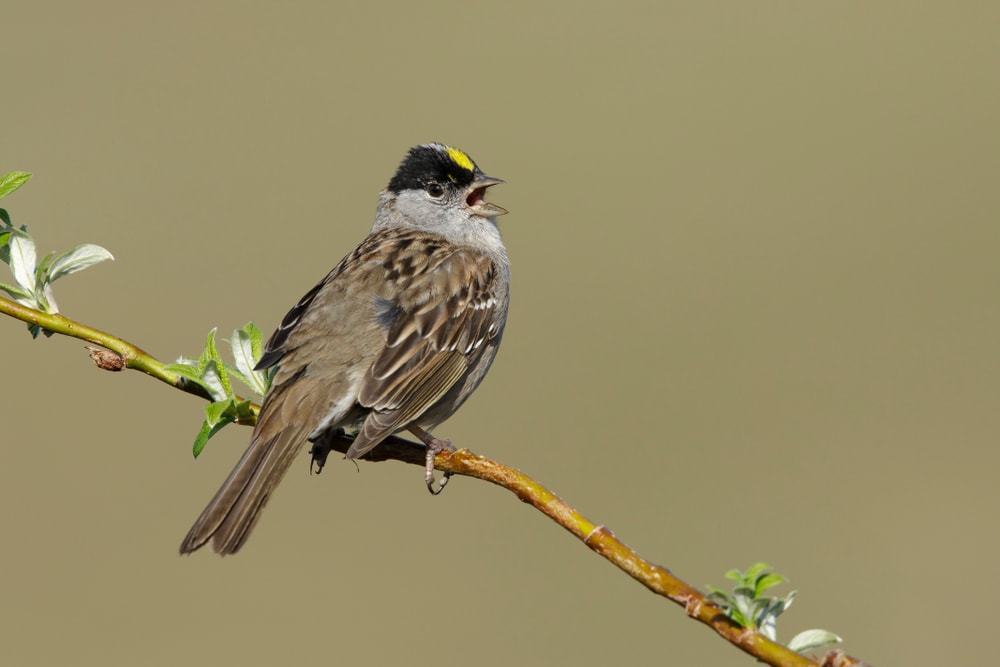
The golden-crowned sparrow can be spotted along the Pacific coast of the US and Canada. It’s found in the states during the winter and migrates to Canada for breeding season.
The body of a golden-crowned sparrow is mostly light brown or gray. It has a yellow patch of feathers atop its head, giving this bird its name.
Golden-crowned sparrows spend much of their life on the ground. They forage for food on the ground and also nest there. Even their nests are built in small depressions. Nesting sites are usually in shrubs or thickets.
This species has special senses that let it know it’s time to migrate. It’s able to notice days getting longer by sunlight using light-sensitive cells.
12. Brewer’s Sparrows – Spizella breweri
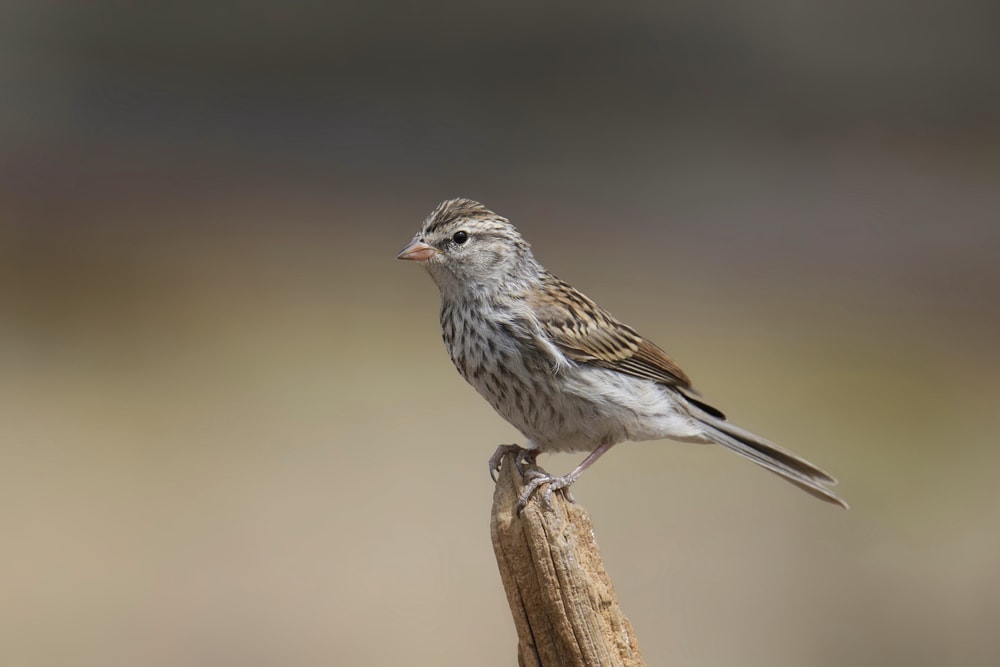
Brewer’s sparrows inhabit sagebrush, plains, and weedy fields. These birds like to take part in social singing while perched on shrubs.
The Brewer’s sparrow’s range is small. It migrates back and forth between winter and breeding season. It lives in the southwestern US and Mexico during winter. They migrate to western states in summer. Some go as far north as southwestern Canada.
It can be difficult to spot brewer’s sparrows because of their brown and gray colors. They’re also private creatures and don’t like to hang out in open areas.
Brewer’s sparrows can survive without water for more than a week. This is because they can adapt to arid environments.
13. Song Sparrow – Melospiza melodia
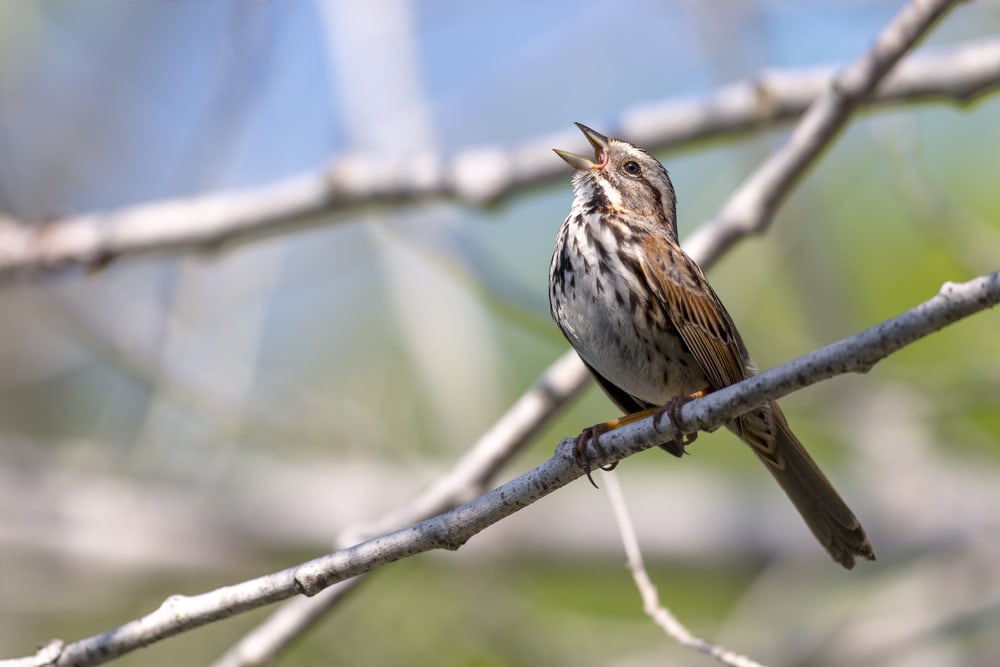
The song sparrow is very common throughout southern Canada and the US. They’re year-round residents in the northeast and west. They spend winters in the southeastern states, and breeding is common in the north.
Looks can widely vary depending on a song sparrow’s range. Song sparrows in the northwest have reddish-brown streaks along their chest and head. Their tail feathers and wings are brown, and their face and belly are gray to white. Their wings are long for their body size.
Song sparrows living in the southwest lack striking patterns. Their feathers are paler, helping them blend in with desert environments.
You might see song sparrows in open area habitats within their range. They’re also frequent backyard visitors.
You May Also Like: The 13 Types Of Hummingbirds In Florida! (ID Guide + Photos)
Sparrow Fun Facts
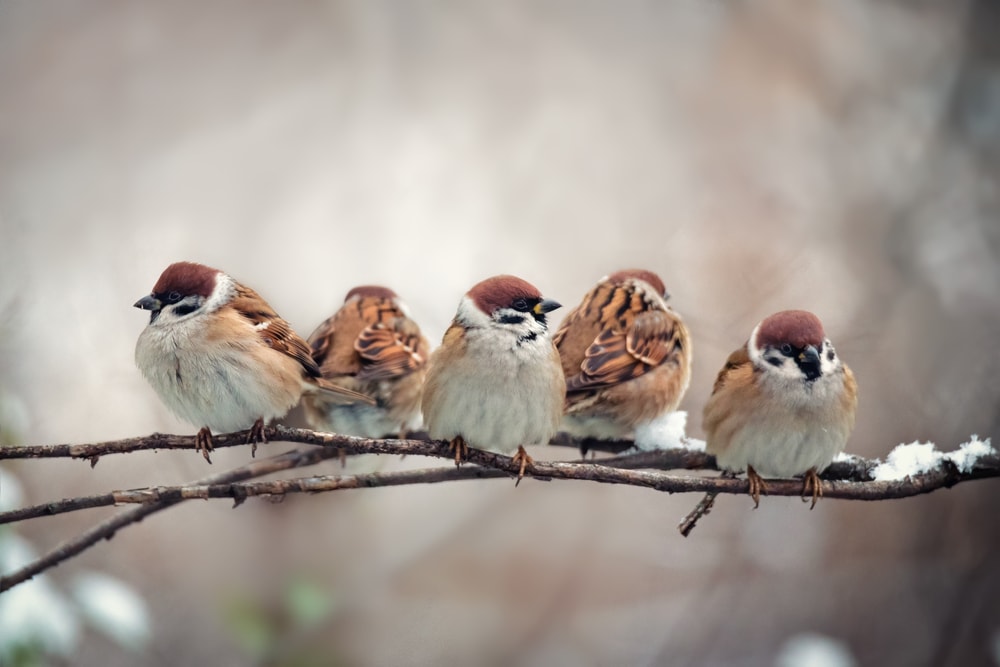
Sparrows specialize in eating seeds.
Sparrows have special conical beaks that are perfect for eating seeds. Some sparrows like to eat insects during the summer, but most of their diet consists of seeds.
Sparrows can fly fast.
Don’t let their small size fool you! Sparrows can fly at speeds over 20 mph (32 kph). They can reach speeds up to 30 mph (48 kph) if they try to escape a predator.
Most sparrow species are social.
Some birds are solitary or only live with their mate for most of their life. Sparrows like to live in colonies or flocks. It’s uncommon for these birds to be solitary.
FAQ
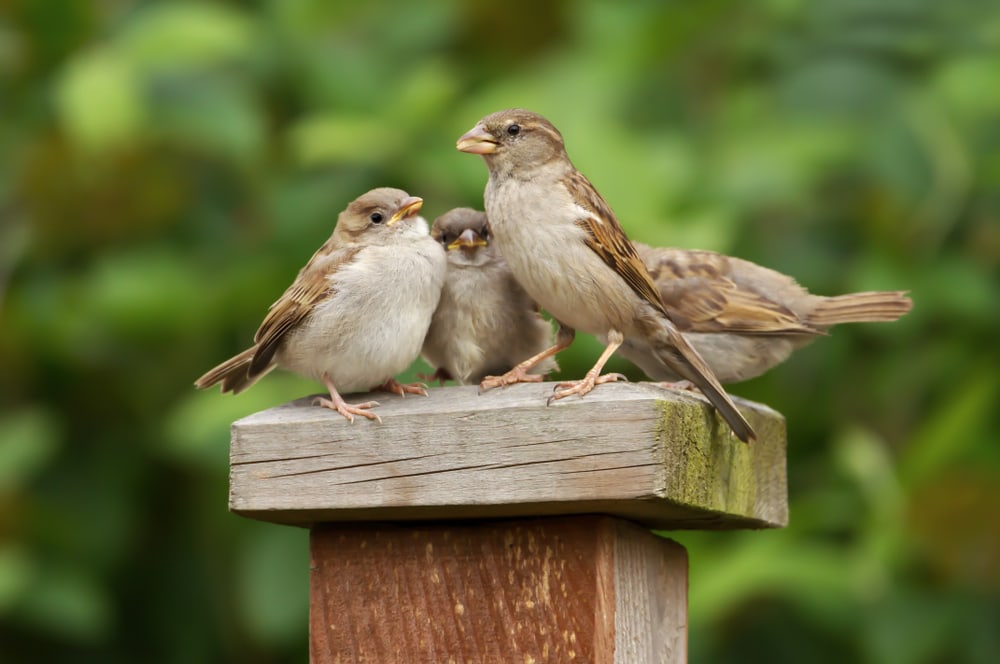
What is the most common type of sparrow?
House sparrows are the most common birds in the Americas and Eastern Hemisphere. Their population is declining, however. Still, it’s estimated that there are more than one billion house sparrows worldwide.
Dark-eyed juncos are also an abundant species. Their numbers reach about 220 million individuals across North America.
What is the rarest type of sparrow?
One of the rarest types of sparrows is an albino sparrow. Albinism is an extremely rare occurrence in wild animals.
Albino sparrows are all white with pinkish-red eyes. Their beaks are light yellow. Albinism has been known to occur in house sparrows.
Can you have a sparrow as a pet?
Keeping a sparrow as a pet might be illegal where you live. States in the US have different laws about keeping certain wild bird species. Many need you to take an abandoned or injured bird to a rehabilitation center for proper care.
Birds protected by the Migratory Bird Treaty Act of 1918 are illegal to keep. But sparrows are a non-native species to North America. This means they aren’t protected by the treaty.
If you find an injured sparrow, it’s best to take it to a wildlife rehabilitation center. Here, it can receive proper treatment and professional care.
How can you tell a female from a male sparrow?
It’s common for males to have brighter or bolder feathers than females. Some males and females may look very similar. Usually, males have a small patch of brightly colored feathers that give them away.
Males have more bright or bold-colored feathers to attract females for mating. Sometimes their colorful feathers might be used in courtship rituals.
How do I identify my sparrow?
The first thing to consider is where you’re located. If you’re in North America, it’s likely a New World species. You might be seeing an Old World species if you’re in Europe, Africa, or Asia. House sparrows have been seen in Australia as well.
Some sparrows are common year-round in parts of North America. However, many species are migratory and like colder conditions for breeding.
The next thing you’ll want to look at is colors and markings. Each species has distinct features that help to identify them.









